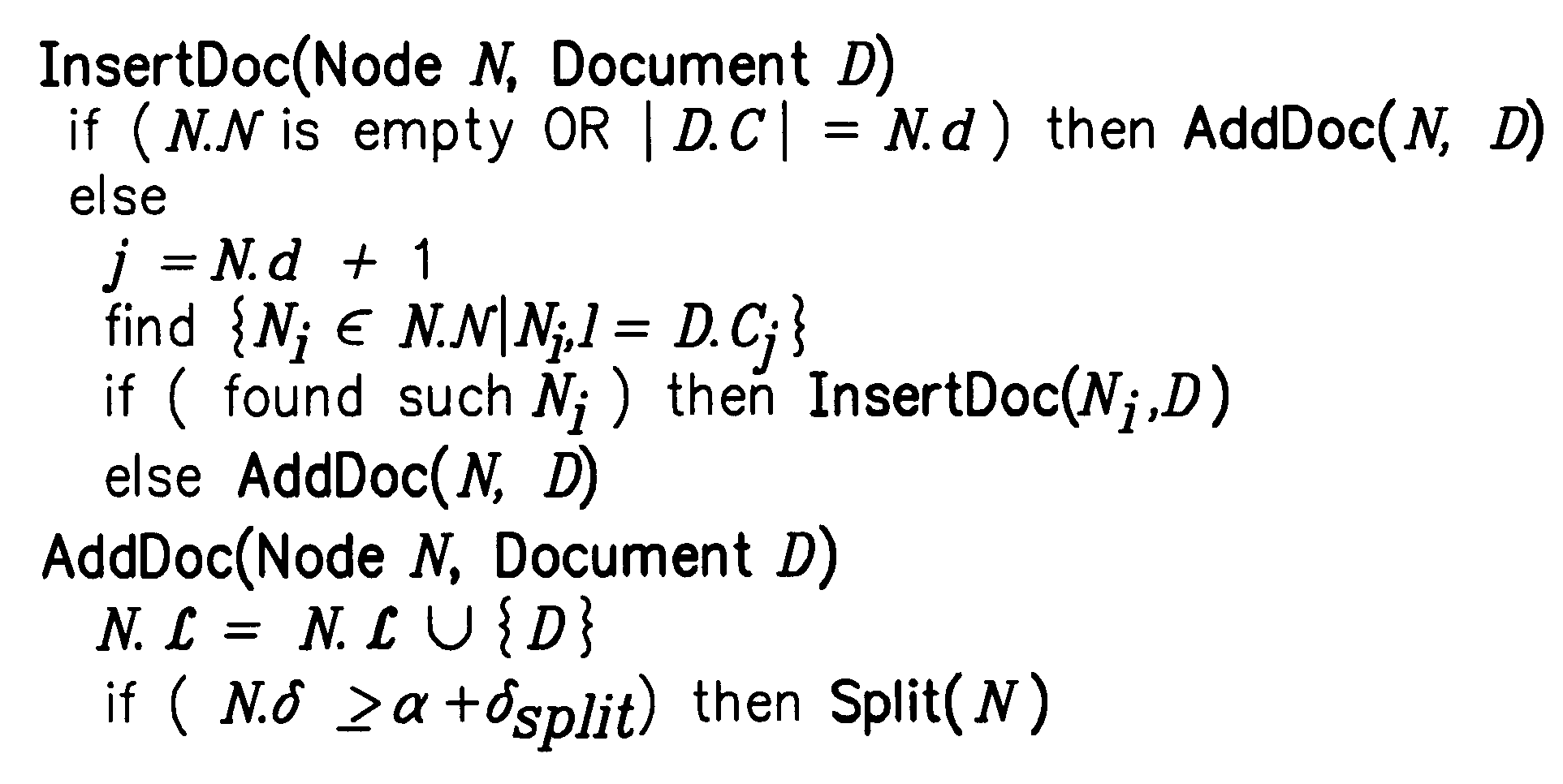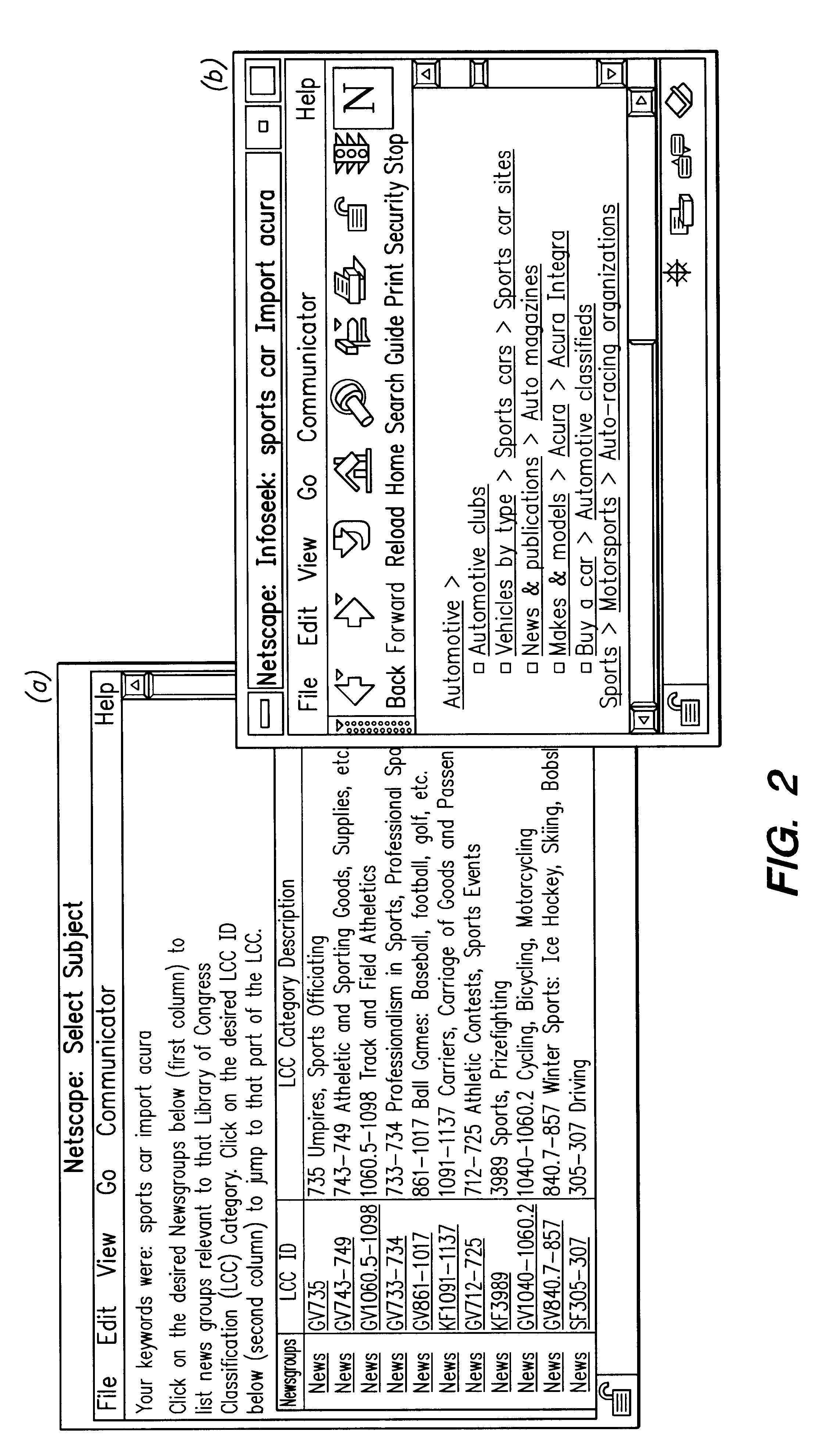Personalized navigation trees
a navigation tree and personalization technology, applied in the field of documents, can solve problems such as ineffective techniques, difficult to choose good labels for categories generated based on clustering, and suffer from several shortcomings
- Summary
- Abstract
- Description
- Claims
- Application Information
AI Technical Summary
Benefits of technology
Problems solved by technology
Method used
Image
Examples
Embodiment Construction
Classification information can be obtained from content providers (e.g., a library or a Web search engine), which have large document sets and computing resources to run sophisticated classifiers. Today, some servers classify each document into categories that are returned with the document. Many servers, although not providing categories explicitly, allow a user to extract keywords from the document to query the server for possible categories. For instance, with the keyword "XML", a classifier returns the category label "Computers and Internet / Information and Documentation / Data Formats / XML".
Without modification, the returned category labels cannot be used to organize documents. For example, FIGS. 1(a)-1(c) show two document sets 101, and 102 of different sizes. Document set 101 of FIG. 1(a) includes millions of documents. As a result, a classification tree with very fine categories (e.g., with a tree depth of 7 or 8) may be required. In contrast, Document set 102 of FIG. 1(b) is re...
PUM
 Login to View More
Login to View More Abstract
Description
Claims
Application Information
 Login to View More
Login to View More - R&D
- Intellectual Property
- Life Sciences
- Materials
- Tech Scout
- Unparalleled Data Quality
- Higher Quality Content
- 60% Fewer Hallucinations
Browse by: Latest US Patents, China's latest patents, Technical Efficacy Thesaurus, Application Domain, Technology Topic, Popular Technical Reports.
© 2025 PatSnap. All rights reserved.Legal|Privacy policy|Modern Slavery Act Transparency Statement|Sitemap|About US| Contact US: help@patsnap.com



